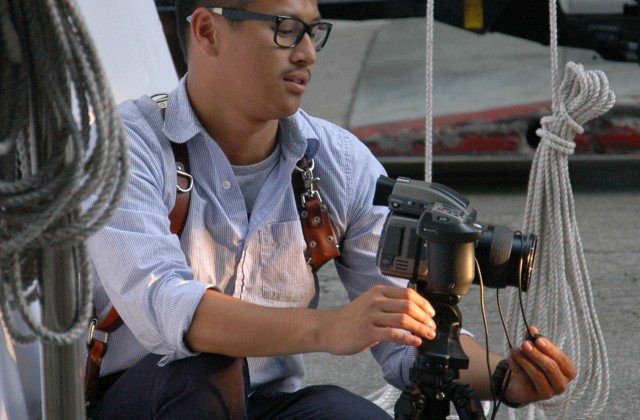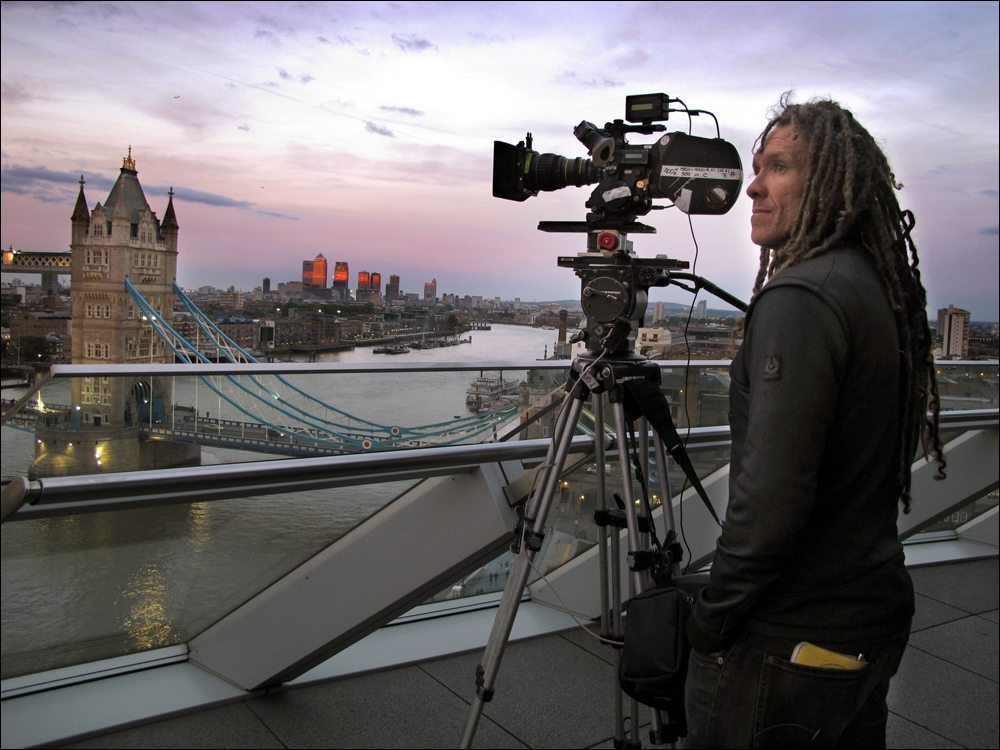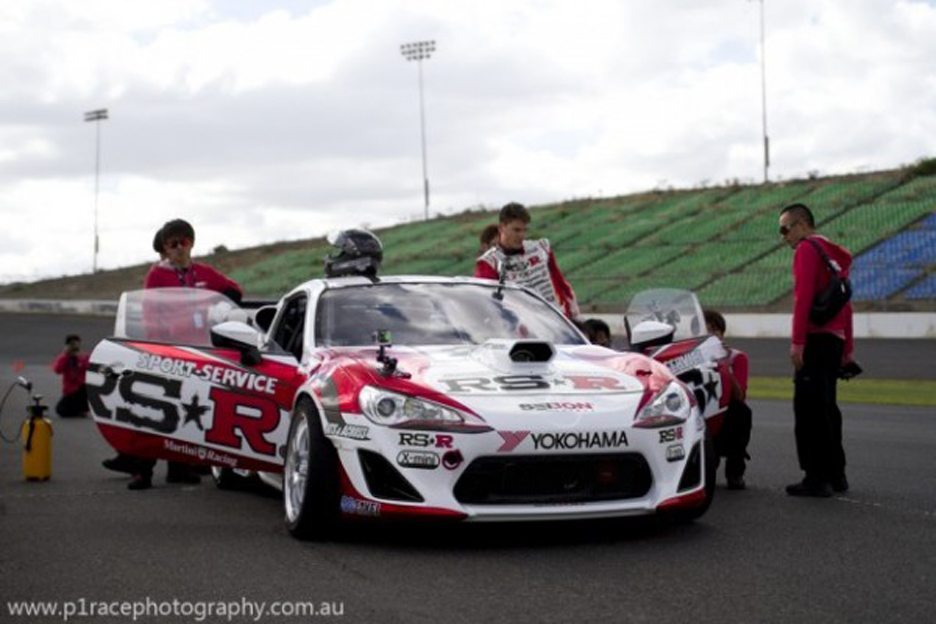If you have followed my posts on Facebook, you already know I have a huge man-crush on Linhbergh. I met him several years ago when he did a feature of our Pink car for Speedhunters. Since then I’ve gotten to know him and his work a bit more and each time I see a new set of photos from him, whether it be automotive, wedding or otherwise, I am overwhelmingly impressed. Linhbergh is a true artist, in every sense of the word, and his dedication to his craft is immeasurable. And besides all that, he’s genuinely a good person.
I had a chance to chat with Linhbergh on a shoot he was doing for Nissan in downtown Los Angeles. Here are some of the highlights from that conversation:
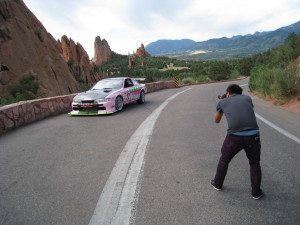 ML@S: Tell me about how you got started.
ML@S: Tell me about how you got started.
Linhbergh: Photography has actually been a fairly new chapter in my life. For most of my education I focused on the skills needed for traditional art. I took drawing, painting, print making and a plethora of art history classes. I had an interest in photography but never really had the inkling to pursue it until 5 years ago.
Everything seemed right at the time to do so. Professional bodied cameras were becoming very affordable and I was just starting to get into cars. As I started fixing up my car, aka “rice it”, I started to want photos of it. So buying a camera to call my own was a natural progression in my creative journey.
ML@S: Who were some of the artists that influenced you?
LN: I find myself influenced by the art and artists that came out during the abstract expressionist era of the 50s. Artists that include Roy Lichtenstein, Jasper Johns, Richard Diebenkorn, Robert Rauschenberg and Georgia O’Keefe. I very was attracted to their use of clean and linear compositional lines with loose brush strokes, which gave their paintings a very organic feel. And I try my best to use that artistic mentality and feel on all my works of art –most importantly, my photography.
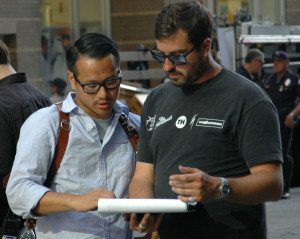 ML@S: When did you realize that you wanted to do this for a living, and more importantly, when did you realize you could actually make a living doing it?
ML@S: When did you realize that you wanted to do this for a living, and more importantly, when did you realize you could actually make a living doing it?
LN: I got into photography thinking that it would be a good side hobby outside of my previous career as a graphic designer. Never in my wildest dreams would I think I’d be doing it for a living. I was in denial of this even as companies started flying me around the world to photograph various racing events.
I started realizing that I could do photography for a living by noticing that I was enjoying taking photos and heading back home to post-process even more so than my design work. Once that realization came, I did everything I could to position myself so that I can make the switch from having a day job, to having a career in photography. And in March of 2010, I did just that.
ML@S: Tell us about some of the different types of work/shoots you do, and do you have a favorite?
LN: These days, I find myself doing more commercial related photography than the editorial side. There are days that I wake up only to find myself standing in front of some sort of Italian exotic, or some form of Porsche, or even some new offering from Bavarian Motor Works. Frequently I find myself risking life and limb to photograph these cars. Hanging out of the back of a pick-up truck at 50-60MPH, not strapped in, is far from the smartest thing to do. But I always tell myself that the risk is worth it for the life long hunt for “that shot.”
Early in my photography career, I was lucky enough to be able to travel all over the country, and even the world, to various automotive events. The 12 Hours of Sebring, Petit Le Mans, Bonneville Speedweek, Formula Drift Irwindale, and the NASCAR All-Star race were a few of my favorite event specific photographic experiences. The top of that list is of course, the Pikes Peak International Hill Climb.
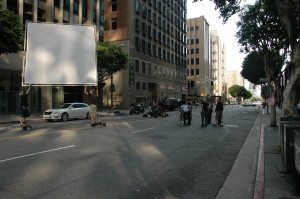 ML@S: What does it take to prepare for a major shoot?
ML@S: What does it take to prepare for a major shoot?
LN: Shooting Italian exotics and the likes takes a good bit of pre-planning, but when you take it up to the level to shoot full-scale commercial ads. It takes a lot more than a photographer, a car owner, and a few days of back and forth emails.
A full-scale commercial shoot takes months of pre-production. It first starts off with a few inquiry emails and phone calls, but once the shoot day is locked in, it blows up in scale from there. On my side of things, I have a print producer who makes sure I get in all the shots that the client wants and also takes care of any of my needs throughout a shoot day. Then there’s my assistant who is quite literally my second-hand man. That person takes care of any of my immediate needs as we’re shooting including making sure that our batteries are all charged, going through the shot list and prioritizing shots, and also setting up my camera so all I have to do is to get into position, compose, expose, and shoot. Last but not least, there’s a digital asset manager. This person organizes all the files coming in from the shoot so at the end of the shoot day, everything is ready for the client.
Outside of the immediate photography team, there’s a line producer, a location manager, a location scout, grip and electric support, a car prep crew, catering and a few production assistants running around doing whatever someone needs. When all is said and done, it’s a very sizable production.
ML@S: We’ve tal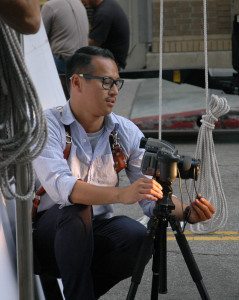 ked about how much you enjoy covering Pikes Peak. Tell us what you love about that event and why it’s so special to you.
ked about how much you enjoy covering Pikes Peak. Tell us what you love about that event and why it’s so special to you.
LN: I get asked very often what my favorite event is to attend is. Without even thinking, I say the Pikes Peak International Hill Climb. There’s no other event where after a grueling week of climbing up and down the mountain, breathing barely any oxygen and running on very little any sleep, you’ll never feel as proud or as good about yourself of what you went through than you would at Pikes Peak.
I consider the Pikes Peak Hill Climb as the most beautiful racing event to photograph. When the sun starts breaking up the night sky and you hear the first race car from the start line and a few moments later see it fly past you in the very unique purple, pink, and orange dawn sunlight, every other care in the world is instantly washed away. It’s just you, a mountain, and a race car.
Though, one thing has to be made clear, the Pikes Peak experience is far from glamorous. It’s freezing in the morning and you can barely breathe because of the lack of oxygen. The weather does what it wants, there are no bathrooms, your body involuntarily passes gas all day long, you urinate incessantly and your main source of sustenance comes from whatever you can forage from the 7-11 convenience store before you make the trip up the mountain.
The best way to experience the Pikes Peak Hill Climb is to experience it as a week long event. There’s three days of practice, one day off, then race day on Sunday. Just witnessing it on race day isn’t enough to take in the full experience.
Do yourself a favor, my friends, get online and visit Linhbergh’s website and check out his work. you can also see his fine artistry on Speedhunters, as well as Facebook. Make sure you like his pages. The photos you will see there are truly inspiring.
If you don’t know Linhbergh Nguyen, you should take some time to get to know him.

